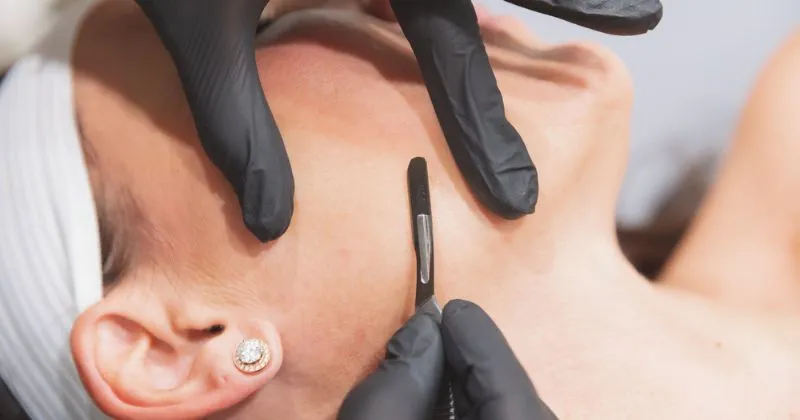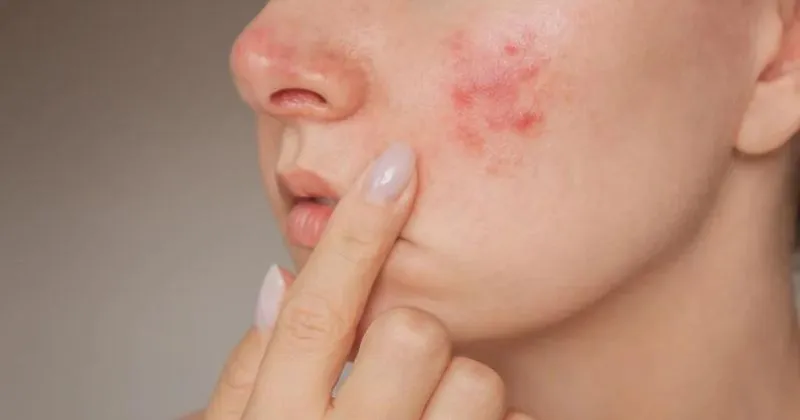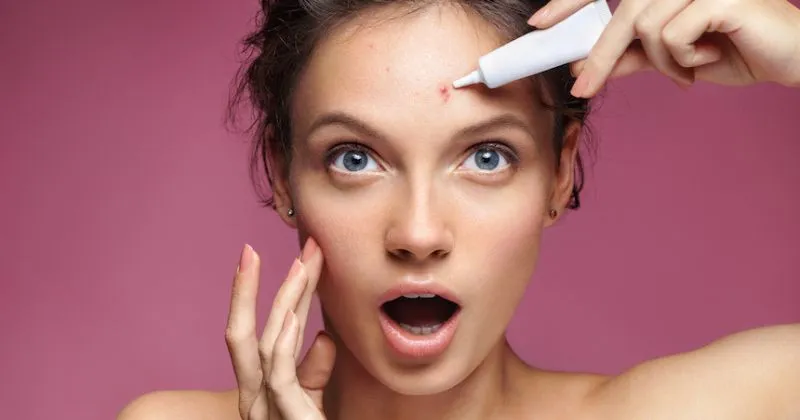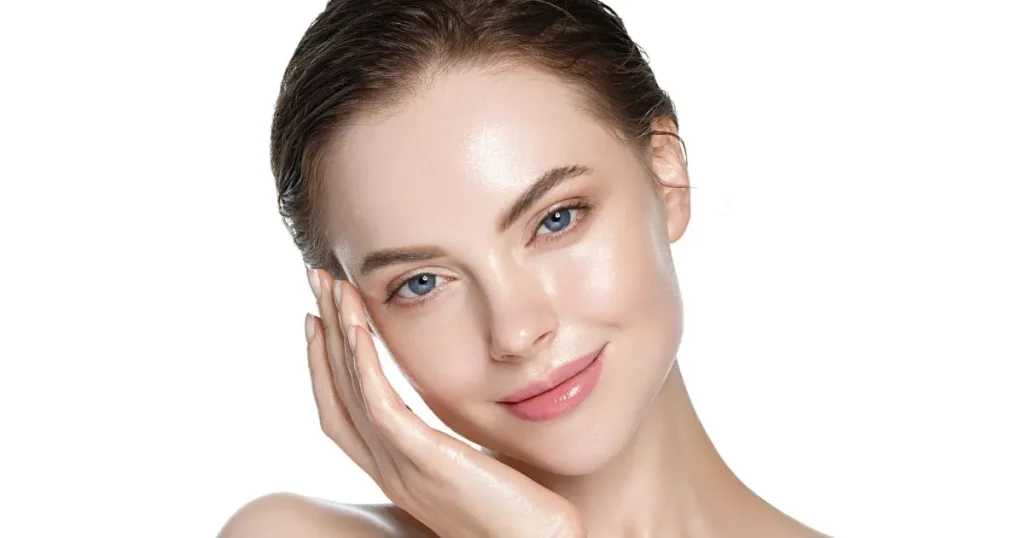Have you ever wondered if dermaplaning, a popular skincare treatment, could actually cause acne? Understanding the relationship between dermaplaning and acne is crucial. Many people turn to dermaplaning for smoother skin, but it’s important to know if this treatment could potentially lead to breakouts.
If you’re considering dermaplaning, knowing how it might impact your skin is crucial, especially if you have acne concerns. Knowing the facts helps you make an informed decision and achieve the best possible results from the treatment.
In this article we’ll explore does dermaplaning cause acne. We’ll look at how dermaplaning affects the skin, especially for those with acne or prone to breakouts. Understanding this connection is essential for anyone thinking about getting the treatment.
What is Dermaplaning?

Definition and Description of the Procedure
Dermaplaning is a skincare treatment that uses a sterile blade to gently scrape off dead skin cells and fine facial hair. A trained professional usually performs it.
How It Differs from Other Exfoliation Methods
Unlike chemical peels or microdermabrasion, dermaplaning is a physical exfoliation method. It doesn’t use chemicals or abrasive materials, making it suitable for most skin types.
Benefits of Dermaplaning
Dermaplaning removes the top layer of dead skin cells, leaving your skin feeling smoother and looking brighter. Without the barrier of dead skin cells, your skincare products can penetrate deeper into the skin, making them more effective.
The treatment also removes peach fuzz (the fine hair on your face), which can make your skin look smoother and help makeup go on more evenly. Removing dead skin cells and fine hair results in a smoother skin texture, reducing the appearance of roughness and unevenness.
Dermaplaning can impart a natural glow to the skin, making it look refreshed and rejuvenated. Regular dermaplaning may help reduce the visibility of fine lines and wrinkles, promoting a youthful appearance. Dermaplaning is generally safe for various skin types, including sensitive skin, when performed by a skilled professional.
Common Misconceptions About Dermaplaning
There are a few myths about dermaplaning that need clearing up:
- It Doesn’t Hurt: Some people think dermaplaning is painful, but it’s usually a gentle and comfortable process.
- Hair Won’t Grow Back Thicker: A common fear is that hair will grow back darker or thicker. However, this is different. The hair will grow back the same as before.
- Not Just for Women: While many women enjoy the benefits of dermaplaning, men can also benefit from this treatment.
Does Dermaplaning Cause Acne?

Dermaplaning, touted for its skin-smoothing benefits, has a darker side that needs attention. Let’s explore the potential acne-related concerns associated with this popular skincare procedure.
Over-Exfoliation and Irritation
One of the primary concerns with dermaplaning is the risk of over-exfoliation. This process involves scraping off the top layer of skin, which can lead to irritation, especially for sensitive skin. Over-exfoliation can disrupt the skin’s natural barrier, making it more prone to redness, inflammation, and breakouts.
Risk of Acne Breakouts
Contrary to its intended purpose of improving skin texture, dermaplaning can sometimes trigger acne breakouts. Removing peach fuzz and dead skin cells may inadvertently clog pores or cause micro-tears in the skin, leading to acne lesions.
Hair Growth Misconceptions
While dermaplaning effectively removes fine facial hair (vellus hair), there’s a misconception that it can lead to thicker or darker hair regrowth. However, scientific evidence suggests that dermaplaning does not alter the texture or color of hair follicles.
Unfavorable for Certain Skin Types
Not all skin types are suitable for dermaplaning. Individuals with active acne, eczema, rosacea, or sensitive skin may find dermaplaning too harsh and potent, potentially their skin conditions. It’s crucial to consult a dermatologist before undergoing this procedure, especially if you have pre-existing skin concerns.
Inability to Treat Acne Scarring
Despite its exfoliating properties, dermaplaning is not designed to treat acne scars. Deeper acne scars require more targeted treatments like laser therapy or chemical peels. Relying solely on dermaplaning for scar removal may lead to disappointment and ineffective results.
The Risk of Physical Damage
Improper technique or aggressive dermaplaning can result in physical damage to the skin. This includes cuts, nicks, or abrasions, which cause discomfort and increase the risk of infection and further skin irritation.
Addressing Acne Concerns Post-Dermaplaning

Break Out After Dermaplaning
Some individuals may experience breakouts after dermaplaning due to several factors. One reason is the removal of peach fuzz and dead skin cells, which can sometimes lead to clogged pores and trapped bacteria, causing acne. Over-exfoliation during dermaplaning can also irritate the skin, triggering breakouts in sensitive individuals.
Cause of Bad Reactions
A bad reaction to dermaplaning can occur for various reasons. First, improper techniques or tools can damage the skin, leading to irritation, redness, and breakouts. Second, individuals with sensitive skin or certain skin conditions may experience adverse reactions post-dermaplaning.
Frequency of Dermaplaning
The frequency of dermaplaning can impact acne differently for each individual. While some may find regular dermaplaning helpful in preventing acne by removing dead skin cells and excess oil, others may experience increased breakouts due to over-exfoliation and skin irritation. Finding the right balance and consulting a skincare professional for guidance is crucial.
Can Dermaplaning Cause Cystic Acne?
Dermaplaning itself typically does not directly cause cystic acne. However, individuals prone to cystic acne should approach dermaplaning cautiously, as excessive exfoliation can exacerbate existing acne conditions. Consulting a dermatologist is recommended for those with severe acne concerns.
Effects of Dermaplaning on Acne Scars
Dermaplaning may help improve the appearance of acne scars by promoting cell turnover and enhancing the penetration of skincare products. However, it’s essential to note that dermaplaning alone may not effectively treat deep or severe acne scars. Combination treatments and professional advice are often necessary for scar reduction.
Alternatives and Precautions
If you’re worried about getting acne after dermaplaning, try other ways to exfoliate your skin. Chemical peels or gentle exfoliating scrubs can be good options. These methods can help keep your skin smooth without causing irritation or breakouts. Additionally, taking precautions such as using skincare products suitable for acne-prone skin and following a proper skincare routine can help mitigate acne risks.
Professional vs. At-Home Dermaplaning
When considering dermaplaning, it is crucial to decide between professional treatments and at-home kits. Professional dermaplaning sessions are typically performed by trained estheticians using high-quality tools, ensuring safety and effectiveness. On the other hand, at-home dermaplaning requires careful attention to techniques and hygiene to avoid adverse reactions.
Managing Breakouts and Acne-Prone Skin
After undergoing dermaplaning, it’s essential to prevent breakouts, especially if you have acne-prone skin. Here are some tips and insights to help you manage your skin post-dermaplaning:
1. Keep Your Skin Clean: Use a gentle cleanser to wash your face twice daily, especially after dermaplaning, to remove any dirt or oil that could clog your pores.
2. Moisturize Regularly: Hydrating your skin with a non-comedogenic moisturizer helps maintain its balance and prevents dryness that can lead to breakouts.
3. Avoid Heavy Makeup: Opt for lightweight, oil-free makeup products to avoid clogging your pores, especially immediately after dermaplaning.
4. Use Sunscreen: Protect your skin from harmful UV rays by applying a broad-spectrum sunscreen with an SPF of 30 or higher daily, even on cloudy days.
5. Choose Skincare Products Wisely: Look for products labeled “non-comedogenic” or “suitable for acne-prone skin” to minimize the risk of pore blockage.
Dermaplaning has its perks, like smoother skin and better makeup application. But it’s not without risks, especially for those prone to acne. Overdoing it can irritate your skin and trigger breakouts. Plus, it may only suit some people’s skin type. If you’re considering dermaplaning, be cautious.
Some may notice breakouts after dermaplaning. Understanding why and how to manage them is crucial. Consulting a dermatologist before diving in is wise, especially for acne-prone skin. Dermaplaning can be beneficial, but it’s not a one-size-fits-all solution. Being informed and careful is vital to skin health. Check reputable sources like the American Academy of Dermatology for more skincare insights.
Frequently Asked Questions
Is Dermaplaning Recommended for Acne-Prone Skin?
While dermaplaning can effectively remove dead skin cells and peach fuzz, it may not suit everyone, especially those with active acne or sensitive skin. Consult a dermatologist to determine if dermaplaning suits your skin type and condition.
How Can One Treat a Breakout After Dermaplaning?
If you experience a breakout after dermaplaning, follow these steps:
Avoid Picking: Refrain from picking or squeezing pimples, which can lead to scarring and further inflammation.
Spot Treatments: Use over-the-counter spot treatments containing benzoyl peroxide or salicylic acid to target breakouts.
Consult a Dermatologist: If breakouts persist or worsen, seek professional advice from a dermatologist for personalized treatment options.
Is It Normal to Experience a Breakout After Dermaplaning at Home?
It’s common to experience a breakout after dermaplaning, especially if proper post-care is not followed or the procedure is done incorrectly. However, consult a skin care professional for guidance if the breakout is severe or persistent.
What Is the Relation Between Dermaplaning and Skin Purging?
Dermaplaning does not cause skin purging, which is common when starting certain skincare products or treatments. Skin purging is typically associated with ingredients that increase cell turnover, such as retinoids, rather than physical exfoliation like dermaplaning.
What Should One Consider Before Deciding To Undergo Dermaplaning?
Before undergoing dermaplaning, consider the following:
Skin Sensitivity: Assess your skin’s sensitivity and existing skin conditions to determine if dermaplaning is suitable.
Professional vs. At-Home: We will consider your experience and comfort level when deciding whether to undergo dermaplaning professionally or attempt it at home. We also consider the importance of post-dermaplaning care, including sunscreen usage, skincare product selection, and avoiding harsh exfoliants.
- How to Use Aloe Vera for Acne: A Comprehensive Guide - June 1, 2024
- Jojoba Oil for Hair: How to Use for Maximum Benefits - May 19, 2024
- 8 Benefits of Jojoba Oil for Skin: The Ultimate Guide - May 18, 2024



